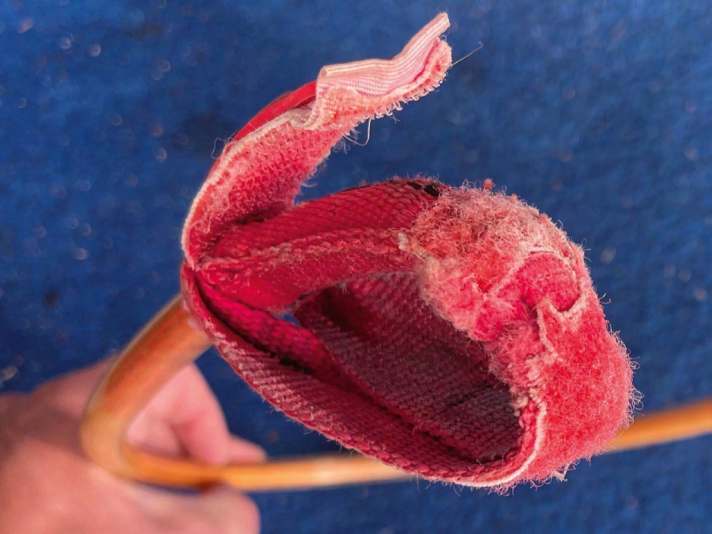Boom, mast base, harness and more: How to find good used accessories
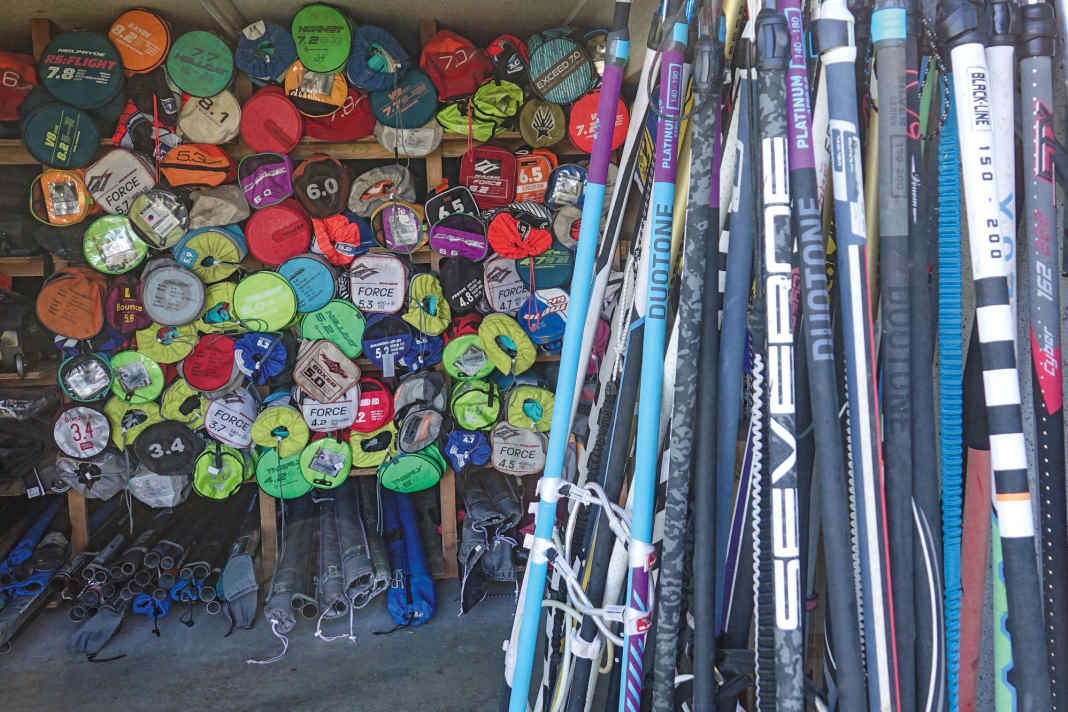





The topics in this second-hand guide:
More second-hand guides:
Forked trees
Length
The "boom" label on the sail indicates the length of boom required. As sails can be trimmed bulbous or taut at the clew depending on personal taste and wind strength, many manufacturers specify the boom length as plus/minus two centimetres. However, you should allow for a little more deviation when choosing the boom (the specifications are sometimes not exact). For the largest sail, it is advisable to allow at least five centimetres in reserve: for example, if the printed specification on the sail is "Boom 195cm", you should buy a boom that can be extended to at least 200 centimetres.
Generally speaking, a little more room to manoeuvre is an advantage, as a longer end piece makes the boom more stable - compared to a shorter one, which you have to ride at the same length in the last hole. When fully extended, the risk of the boom bending in the event of a fall is significantly higher. At best, the boom is selected so that it covers three to four sail sizes, so you only need one. The adjustment range is usually printed in large letters on the spars.
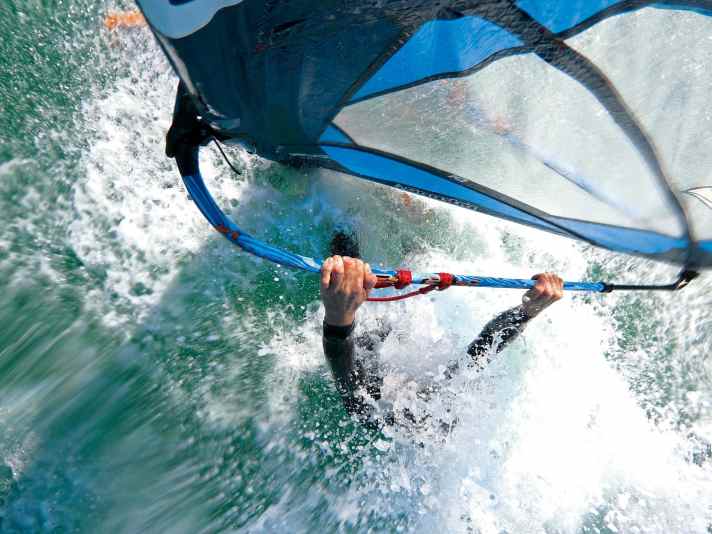
RDM/SDM
This refers to the size of the cut-out at the front of the boom for attachment to the mast. Some small, modern booms up to 200 centimetres in length - for wave/freestyle use - are nowadays designed exclusively for thin RDM masts (reduced diameter, also known as skinny masts). The recess inside the clamp is then too narrow to attach the boom to a thick SDM mast (standard diameter). Most other booms (especially from 200 centimetres upwards) for larger sails are generally suitable for both mast types. This is because a removable adapter is simply integrated into the wider recess on the front piece, which can compensate for the different diameters.
If you buy a boom that does not come with such an adapter, you have the option of buying a universal adapter. This is often supplied with the purchase of a skinny mast.
Carbon/aluminium
Fork trees made of carbon are lighter, stiffer, more stable and often have even thinner spar diameters and are therefore easier to hold. If the price factor did not play a role, there would only be one correct answer: carbon! The boom is the direct connection to the sail - it literally determines how a sail feels in the hand. Even if aluminium booms don't directly spoil the fun of surfing and don't immediately represent a clear limitation for beginners or experts, we can recommend everyone without hesitation to use a carbon boom if possible. Heavier surfers in particular, those who jump a lot or are travelling with powerful camber sails should definitely consider the stiffer carbon spar.
Check condition
Damage to the covering?
The surface of the Gebalbaum (also known as grip) suffers every time it comes into contact with tarmac, standing paint or reef. Small imperfections are common and almost unavoidable and are no reason not to buy a fork. However, if the coating is in tatters and you can see large patches of bare carbon or aluminium, this is a criterion for exclusion. Unless you intend to completely replace the coating, this should not be underestimated in terms of the amount of work involved and is not cheap either. Under the keyword "boom cover" you will find on www.surf-magazin.de a complete workshop on this topic.
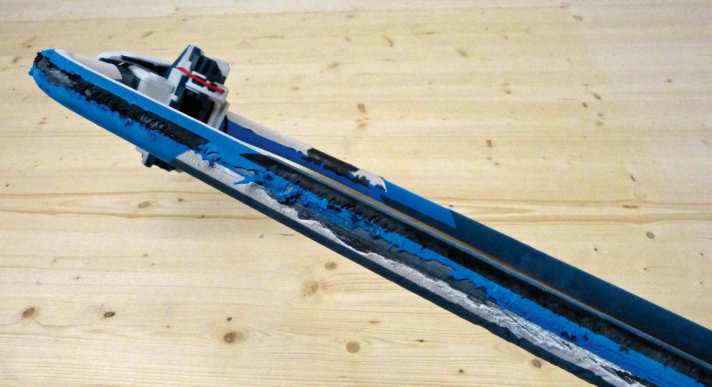
Bent?
If you buy a used aluminium boom, you should carry out a simple test to check that it is not bent - push the end piece into the spars as far as it will go. If this is no longer possible, the fork is bent and you can no longer use the entire adjustment range.
Corroded?
If the end piece is covered with a kind of white layer of dust, the aluminium has corroded. A little corrosion is not a bad thing and can hardly be avoided during storage. However, the more a fork corrodes, the more difficult it becomes to move when adjusting. In extreme cases, the end piece can no longer be moved.
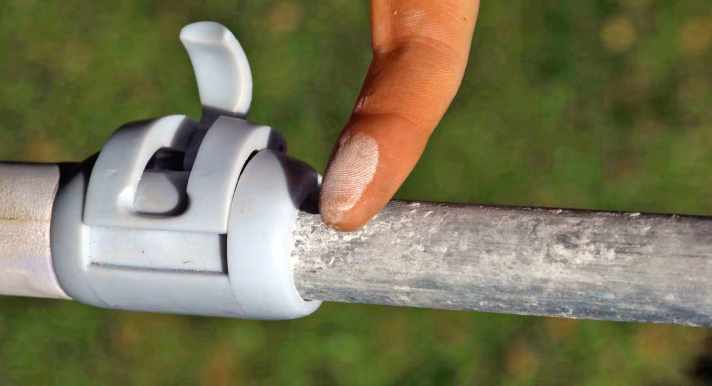
Pins
You should also check that the pins and plastic caps for opening and closing the adjustment mechanism are present and functional.
Head piece
The head piece may rotate slightly around the spar (which is important for attachment to different clew heights), but it should not be completely loose, be able to rotate once on its own axis and wobble. If this happens, the carbon underneath will already be heavily abraded - and the boom will start to wobble when attached.
Price range
While you still have to fork out around 500 euros for a well-preserved carbon fork that is one to two years old, you can deduct around two to three hundred euros for the aluminium version. Older models are sometimes available for less than 100 euros. With the carbon version, on the other hand, you rarely get below 250 euros, regardless of age and condition - unless you go for real oldies. The carbon part itself retains its value, regardless of the cover, headpiece and pins.
Mast extension & base
The mast extension and mast foot plate must be compatible so that the board and rig can be connected later. Fortunately, the pin system has become widely accepted on the market - 95 per cent of mast bases have a thin metal pin that is inserted into the extension to connect the board and sail. Nevertheless, there are alternative systems on the market (e.g. Quick Release or US Cup) that only fit into corresponding extensions. So make sure that the mast base and extension are from the same system.
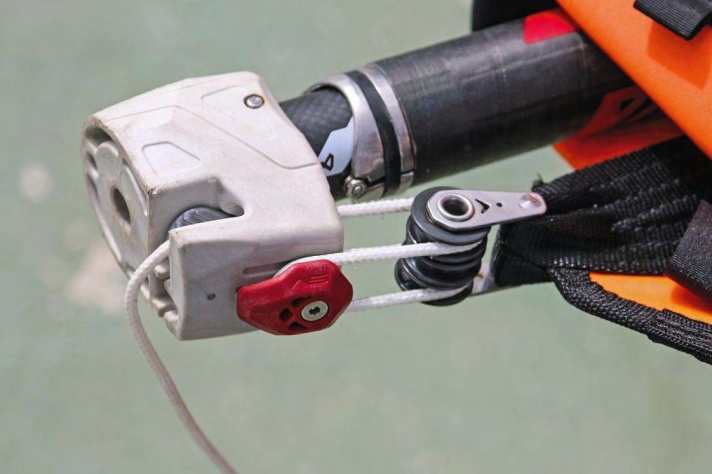
If you already have a mast base, you can take it with you when you buy the extension to see if it fits. Conversely, when buying a mast base, you should of course make sure that it is compatible with the extension you have already purchased.
The diameter of the extension and the mast must also be compatible. The extensions are labelled RDM (Reduced Diameter) and SDM (Standard Diameter) in the same way as masts - the designation of the mast and extension must match, otherwise the extension is unusable.
Mast extensions are also available in different lengths (e.g. 45 cm, 30 cm, 15 cm). Depending on your requirements, one or the other makes sense. For example, if you only use two sails in total, both of which only need a few centimetres of extension with corresponding masts, you can consider choosing a shorter extension to save yourself the superfluous weight of the upper adjustment range. However, this is only a matter of a few grams, an extension of 30 centimetres is generally recommended.
adjustment range is most frequently used. And finally, it comes down to the good old question: carbon or aluminium?
The majority of surfers will quickly notice the difference between a carbon and aluminium boom - not so much with the extension. In this case, you can safely opt for the aluminium version. An extension made of carbon is only very light, but also correspondingly expensive, without any noticeable advantages for non-professionals. An aluminium extension is completely sufficient for 90 percent of surfers to be happy.
Condition & price
The number one wearing part of the mast base is the flexible joint between the plate and pin. Depending on the thickness (Powerjoint: wide, Tendon: thinner urethane sinew) and the usage profile, these last longer or shorter - but no joint lasts forever. At some point they become brittle and start to tear (especially in cold temperatures when the material is not so flexible). The check is simple: just bend them back and forth all round. If you see cracked elephant skin anywhere, the end is near. The narrow tendon, on the other hand, tends to fail (if at all) in the dark: namely where the pins pierce the tendon. There's no arthroscopy here, only unscrewing helps. So you can't rely on a used mast base because of this. Although it is relatively easy to replace most mast feet with tendons, they are not very cheap in relation to the entire mast foot. Buying second-hand mast bases is therefore generally only recommended to a limited extent.
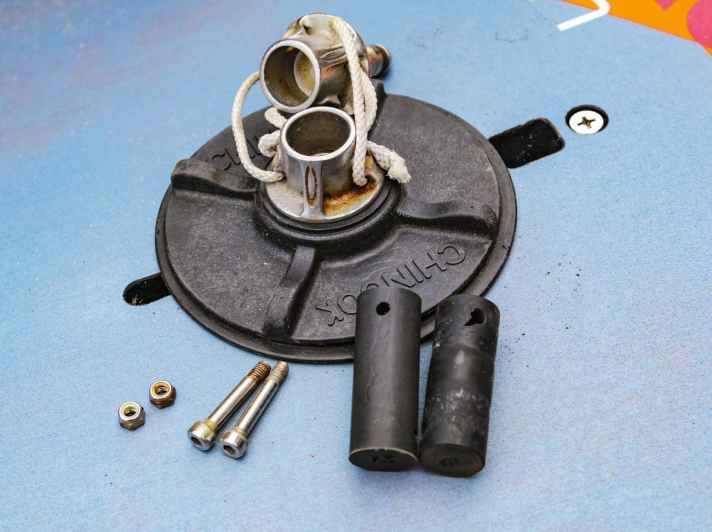
Mast extensions, on the other hand, usually last forever and are reasonably risk-free to buy second-hand. You should just make sure that the aluminium versions are not bent and that the cup at the bottom, where the mast base goes in, does not wobble. With the pin system, the weak point is often the button used to release the mast base from the extension. Its return spring may be rusty - or no longer have any tension. The button should move smoothly and return to its original position automatically when you let go of it. It should go without saying that the rope should be thoroughly checked by the previous owner - if they left it on and sold it with the boat - before you take it out on the water.
An aluminium mast extension is enough for 90 percent of surfers to be happy.
And how much should the two parts cost when used? For a used aluminium mast extension, you should budget at least 20 euros and spend a maximum of 100 euros. Carbon fibre extensions are not easy to find on the second-hand market and are significantly more expensive in comparison - as with booms, they do not lose much value. The premium extensions sometimes cost over 300 euros new, and used ones are rarely found for less than 150 euros.
Mast bases are available on the second-hand market for as little as 15 euros (check the joint!).
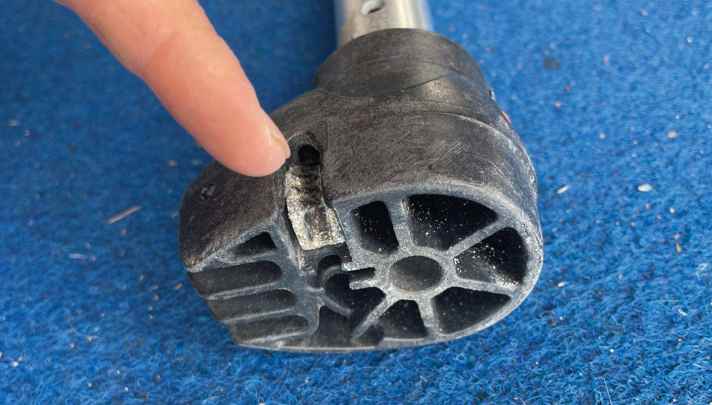
Finns
The majority of boards are supplied with fin(s) as standard and you can't go far wrong with them. And when selling a used board, these are usually offered by the seller. Only purebred slalom boards are usually sold without fins, as professionals and racers usually choose them according to personal preference and performance. A good slalom fin can also be very expensive. In general, however, anyone who wants to improve or change the performance or handling characteristics of their equipment can achieve a great deal with a different fin. You can find various guides here->
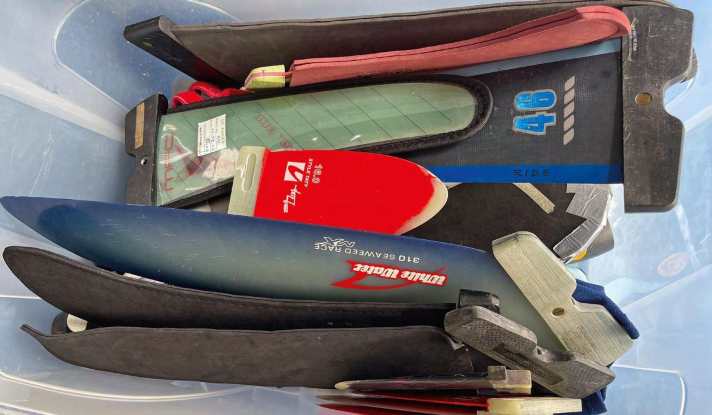
Condition & price
So if you want to tune and are looking for a different fin, you'll quickly find it on the second-hand market. There is a relatively large supply here, as new fins can be quite expensive and many surfers often try out different fins - a new
Finns
A fin that does not run as expected is then simply passed on. Defects cannot be covered up here and can hardly be overlooked. Slight scratches caused by contact with the ground are often not particularly serious and can simply be sanded smooth. If the fin has already been sanded a lot, this can be recognised by clear sanding marks. Significant signs of use such as corners and edges in the profile are a reason to reduce the price and require urgent repair. You can find two workshops on this under the keywords "Repair fin" on our website.
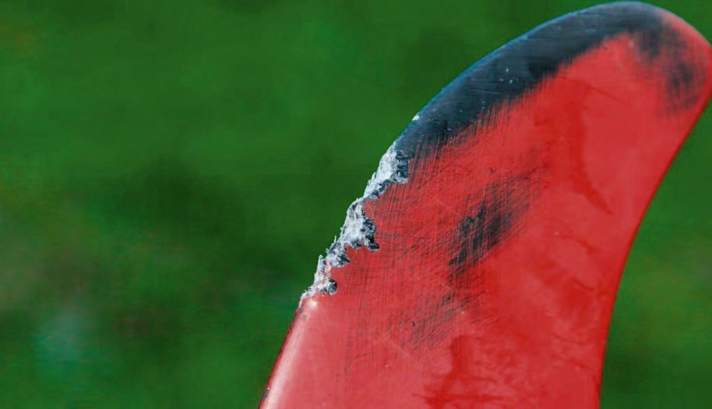
With slot box fins, you should also take a look at the grooves - they can be damaged at certain points when they come into contact with the ground and can "deflect".
The price range for used fins is enormous: while older wave or freestyle fins are sometimes thrown at you, you still have to fork out 150 to 200 euros for a current, undamaged slalom fin, for example. Some designers' masterpieces are outweighed by gold dust.
Neoprene
Thickness and length
The thickness of the neoprene determines how warm a suit is; it is usually printed on the arms. The thickness is indicated with values such as 5/4, 4/3 or 3/2. These numbers stand for the material thickness on the body and the extremities, so 5/4 means five millimetres of neoprene thickness on the body - and four on the arms and legs. How thick the neoprene should be depends on when and where it is primarily used.
We recommend a 5/3 or 5/4/3 millimetre Neo as an all-rounder for local fishing grounds.
As an all-rounder, we generally recommend a neo of thickness 5/3 or 5/4/3, which you can use as often as possible at home. Only on cold winter days and in midsummer is this thickness not ideal. On warm summer days, especially inland, you can quickly resort to a 3/2 and, depending on your personal preference, even with short arms and/or legs (shorty). Shorties are usually offered with a thickness of two or three millimetres. However, if you also want to go out on the water on winter days (below ten degrees centigrade), you often need more than the 5/3 all-rounder just mentioned. However, this does not necessarily have to be the expensive, thick 6/5 with an integrated bonnet, as there are some useful accessories that can be used to upgrade the all-rounder to a winter-ready neo (especially for the first cold, windy days in the transition period).
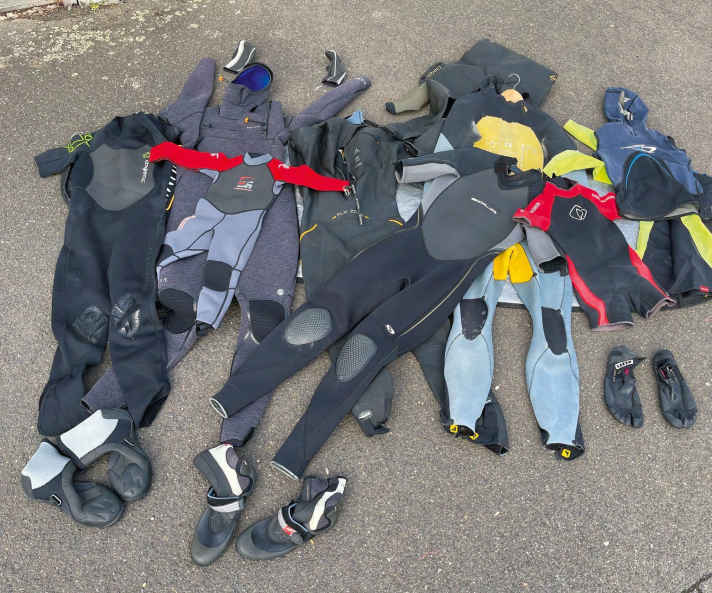
Laminated or smooth skin
In general, a distinction is made between smooth-skin and laminated suits, regardless of thickness. As the name suggests, smooth-skin neoprene feels smooth on the outside. As a result, water rolls off quickly and the evaporative cooling (wind-chill effect) is reduced. Laminated neoprene has a thin layer of nylon glued to the outside. This makes the suits very robust (e.g. against abrasion on the base coat or contact with the fin), but also increases heat loss due to higher evaporative cooling. A 5/3 smooth-skin wetsuit is therefore noticeably warmer than a laminated wetsuit of the same thickness as soon as it gets wet in the wind.
Fit
Surf suits should fit snugly around the body, especially at the neck and the arm and leg cuffs, so that no water can penetrate - but they should offer sufficient freedom of movement in the important areas (arms, shoulders) and not be too tight: Otherwise you're bound to get fat arms after a very short time when surfing. It definitely doesn't hurt to try them on, even when buying second-hand.
Condition & price
Holes, tears, patches: Neoprene suffers, for example, when it comes into contact with rough floor paint or sharp fingernails when putting on and taking off. This quickly becomes apparent on closer inspection, and rough or torn seams also catch the eye. However, minimal water ingress due to slightly leaking seams (especially in the crotch area) can be quite unpleasant, but is often invisible. If this only becomes apparent after the first use on the water, small areas can often be sealed with neoprene adhesive. 35 grams of "M2 neoprene glue" costs 7.50 euros - always worth a try if there is a slight ingress of water. The price range on the second-hand market is very wide, depending on the thickness and model. For a good, undamaged 5/3 all-rounder that costs 300 to 400 euros new, you should budget around 100 euros on the second-hand market.
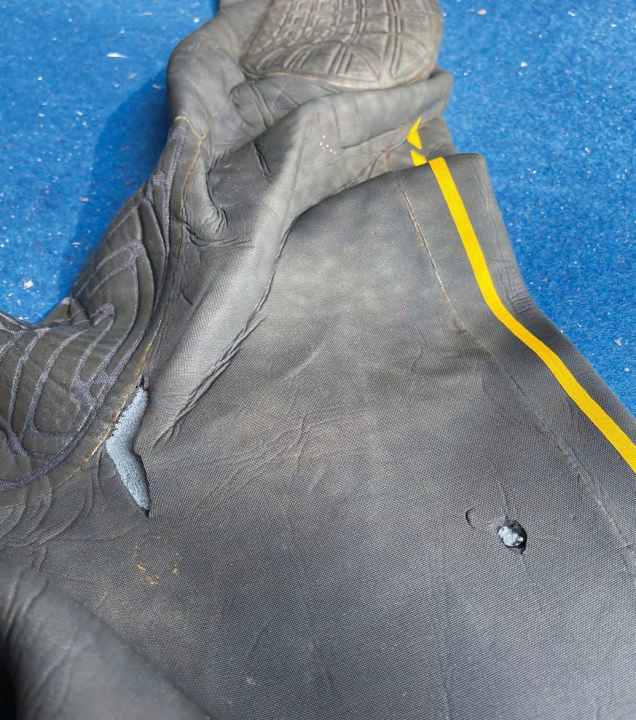
Trapezoids
Seat or hip harness?
The seat harnesses equipped with leg straps, with a slightly lower hook position, can take the strain off your back during long surf sessions. As the name suggests, you "sit" a little more in the sail - instead of carrying the entire weight with your lower back, as is the case with hip harnesses. However, hip harnesses are still more suitable to start with, as the higher hook position makes it easier to hook and unhook and you have more freedom of movement overall without leg straps. This is why seat harnesses are also much more common in the freeride/racing sector than in the freestyle/wave sector, where hip harnesses are almost exclusively used nowadays. But which harness you use as an experienced windsurfer is a matter of taste - and not a question of right or wrong.
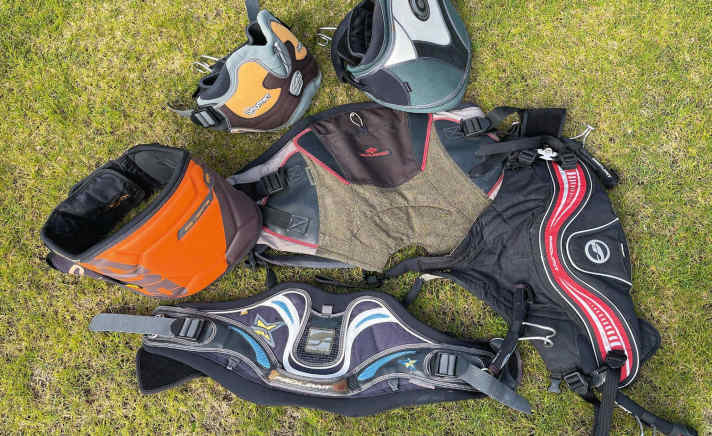
Fit and size
Ideally, you should try on the harness before you buy it to avoid it pinching or rubbing afterwards. When you put it on for the first time, you will usually quickly notice whether the harness moulds to your body shape or not. If something doesn't fit properly when you try it on for the first time or only pinches slightly, in most cases this won't improve when surfing. Then it's better not to buy! Women in particular should make sure that they don't buy a men's harness, but a model for ladies that always has customised ergonomics.
Women should make sure that they don't buy a men's harness, but a model for ladies that always has customised ergonomics.
Condition & price
Harness belts fade over time. Or, for example, you can always see how the coating on the back of some models slowly begins to peel off. Used harnesses can therefore look a bit harsh, but are usually still fully functional. As not many essential items can break, harnesses are a great second-hand item. The quick-release fastener must work and the straps must not be chafed - then you can buy them without hesitation.
Functional, used harnesses (whether hip or seat harnesses) are available for as little as 30 to 50 euros.
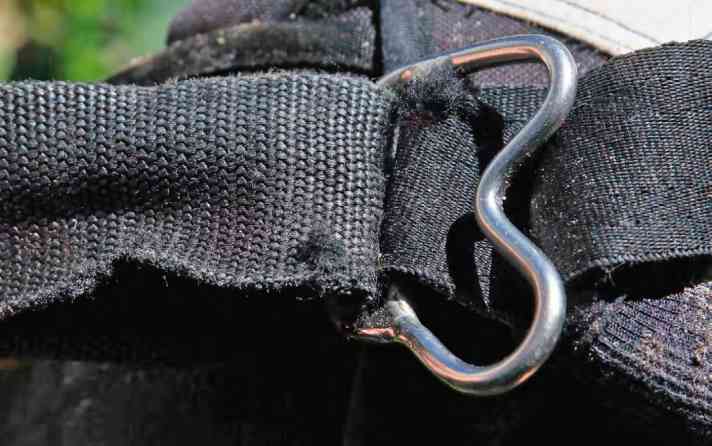
Additional accessories: shoes, loops, ropes
Neoprene shoes
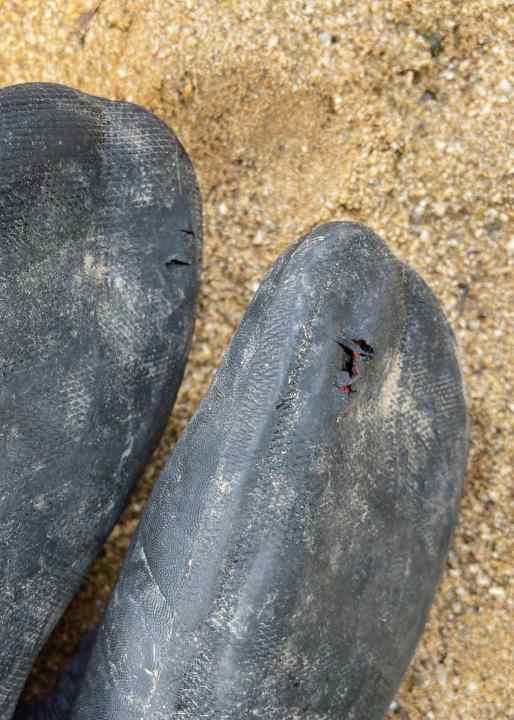
Foot straps
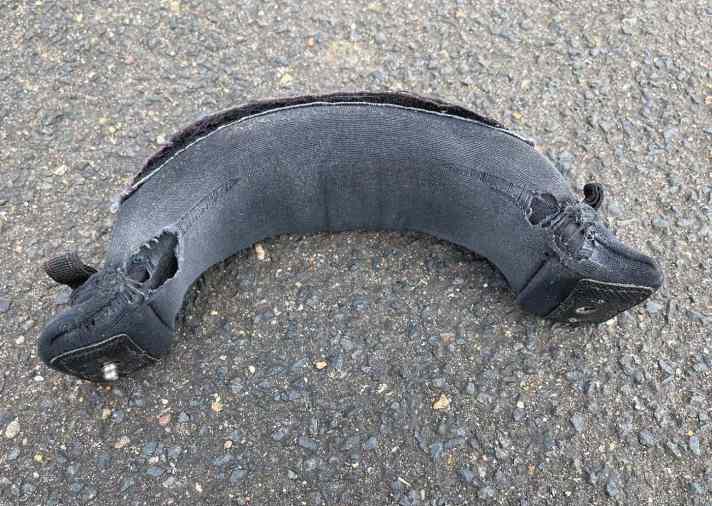
Trapezoidal ropes
